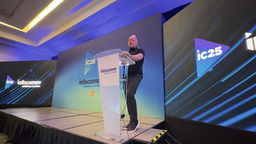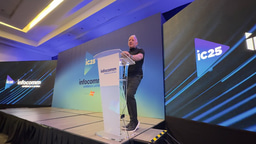Preparing AV Professionals for the Artificial General Intelligence Revolution

When the CEO walks into the boardroom, the space already knows. Not because someone scheduled it in Outlook or her assistant pressed a button. The room knows because it recognized the pattern: third-quarter earnings call prep, key stakeholders arriving separately to avoid speculation, tension in her gait suggesting disappointing numbers.
Without prompting, the lighting shifts to what the space has learned, optimizing complex decision-making for this team. The display preloads the earnings deck and relevant historical data from similar situations. The acoustic profile adjusts to ensure every participant—including the three joining remotely from different continents—feels equally present and heard.
This isn't automation following rules. This is reasoning.
The Reactive Reality We're Leaving Behind
Today's "smart" meeting rooms are expensive remote controls with memory. Does a motion sensor trigger lights? It's reactive. Preset scenes for different meeting types? It's reactive. Even AI-powered camera tracking is just sophisticated pattern matching—reactive systems dressed in intelligent clothing.
Here's the uncomfortable truth: while you've been perfecting 4K displays and acoustic treatments, your clients have been living with AI that writes their emails, predicts their needs, and handles complex reasoning tasks. They're experiencing intelligence everywhere except in the spaces where they spend 40% of their working hours.
The disconnect is jarring. Your client uses GPT-4 to prep for a board meeting, analyzing complex scenarios and generating strategic options. Then they walk into a boardroom that can't even figure out they need different lighting for reviewing spreadsheets versus creative brainstorming. The space feels dumb by comparison, and that perception is spreading.
The evolution from reactive to reasoning isn't just a technology upgrade—it's a fundamental shift in how spaces serve human needs. Reactive systems wait for triggers, while reasoning systems anticipate, adapt, and actively enhance human performance.
Understanding the Intelligence Architecture
Creating reasoning meeting spaces requires understanding three layers of intelligence that must work in concert:
Perceptual Intelligence: The room's ability to understand what's happening beyond simple presence detection. This means:
- Distinguishing between a heated debate and an energetic brainstorm through voice pattern analysis
- Reading body language to detect when a remote participant feels excluded from the conversation
- Understanding meeting flow—when you're stuck, when you're building momentum, when you need a break
Contextual Intelligence: The room's ability to understand why things are happening. This involves:
- Accessing calendars, agendas, and participant profiles to understand the meeting purpose
- Learning organizational patterns—how this team likes to work, their communication styles, and their optimal conditions
- Connecting current activities to broader business objectives and workflows
Adaptive Intelligence: The room's ability to act on understanding to improve outcomes:
- Dynamically adjusting environmental conditions based on meeting energy and progress
- Proactively suggesting resources, data, or alternative approaches when detecting impasses
- Creating subtle environmental cues that guide better meeting behaviors
Real Applications: What Reasoning Looks Like
Let's get specific. Here's what AGI-powered reasoning looks like in actual corporate meeting scenarios:
The Strategy Session That Adapts
The leadership team gathers for annual planning. As the discussion begins, the AGI system recognizes the exploratory phase—many questions, conceptual language, and forward-looking statements. The lighting subtly warms and dims slightly, proven to enhance creative thinking. Display layouts shift from data-heavy to visual, supporting big-picture thinking.
Two hours in, the conversation shifts. Language becomes more specific, participants reference numbers and timelines. The room recognizes the transition from ideation to decision-making. Lighting cools and brightens slightly. Displays reconfigure to support detailed analysis. The acoustic profile adjusts to ensure every number and commitment is crystal clear.
The Crisis Response That Anticipates
An emergency board meeting convenes. The AGI system, recognizing the unusual timing and participant list, has already:
- Preloaded relevant contracts, regulations, and precedents based on recent company events
- Adjusted room conditions for high-stress decision-making (cooler temperature, specific lighting spectrum)
- Prepared secure communication channels, knowing sensitive discussions require enhanced privacy
- Queued stress-reduction protocols—ready to subtly adjust environmental factors if tension becomes counterproductive
The Hybrid Meeting That Truly Connects
Remote participants often feel like second-class citizens. AGI changes this by:
- Tracking engagement patterns and alerting when remote participants haven't spoken recently
- Adjusting camera angles and audio focus to create a natural conversation flow between the room and the remote sites
- Translating non-verbal cues—when someone in the room points at a display, remote participants see highlighted sections
- Creating "presence equality," where the system ensures equal talk time and attention distribution
Implementation: Your Path from Reactive to Reasoning
The journey from reactive to reasoning requires methodical implementation. Here's your roadmap:
Phase 1: Sensory Foundation (Months 1-3)
Start with rich data collection. This isn't about buying more cameras—it's about creating comprehensive environmental awareness:
- Deploy acoustic arrays capable of voice pattern analysis, not just echo cancellation
- Install vision systems that understand human behavior, not just track faces
- Add environmental sensors for temperature, air quality, lighting levels, and even stress indicators
- Create a unified data architecture where all sensors feed a central intelligence platform
Phase 2: Pattern Learning (Months 3-6)
Intelligence requires understanding your specific context:
- Connect to organizational data sources—calendars, project management, communication platforms
- Implement learning systems that identify meeting patterns, team dynamics, and optimal conditions
- Build behavioral profiles—how different teams work, what environmental conditions drive their best performance
- Create feedback loops where meeting outcomes inform future optimization
Phase 3: Reasoning Engine (Months 6-9)
This is where reactive becomes reasoning:
- Deploy AGI models trained on your organization's specific patterns and needs
- Create decision frameworks—when to intervene, how to adapt, what changes drive desired outcomes
- Implement predictive capabilities—anticipating needs based on context and history
- Build explanation interfaces—the system should communicate why it's making specific adjustments
Phase 4: Continuous Evolution (Ongoing)
Reasoning systems never stop learning:
- Regular model updates based on new patterns and outcomes
- Expansion to new use cases as the system proves value
- Integration with broader organizational intelligence initiatives
- Evolution from room-level to campus-wide intelligent ecosystems
The Infrastructure Reality Check
Let's address what no one wants to discuss: the infrastructure requirements for reasoning spaces are massive compared to traditional AV.
Compute Power: Forget equipment racks with control processors. You're looking at edge AI servers with GPU acceleration. Budget for 10-20x the compute power of traditional systems.
Network Architecture: 1Gb networks can't handle the data flow from comprehensive sensory systems and AI processing. Plan for a 10Gb backbone at minimum, with 100Gb for larger deployments.
Storage Systems: Reasoning requires memory. Not just recording storage, but active data lakes for pattern analysis. Think terabytes, not gigabytes.
Power and Cooling: Every watt of AI compute generates heat. Your mechanical systems and AV systems need upgrading. Plan for 3-5x traditional power requirements.
Security Architecture: When rooms can reason, they become targets. Implement zero-trust architecture, encrypted data flows, and AI-specific security protocols.
Strategic Positioning for AV Professionals
This transformation creates unprecedented opportunity for prepared AV professionals. But it requires evolution in how you position yourself:
From Vendor to Strategic Advisor: Clients need guidance navigating this complexity. Position yourself as the expert who understands both human needs and technical possibilities.
From Project to Partnership: Reasoning systems require continuous optimization. Build recurring revenue models around performance optimization, not just installation.
From AV to Experience Architecture: You no longer sell displays and speakers. You're designing intelligent environments that measurably improve business outcomes.
From Technical to Transformational: Learn to speak the language of business transformation. ROI isn't about equipment lifespan—it's about improved decision-making, faster innovation, and better collaboration.
Your Next 90 Days
The window for establishing yourself in reasoning-based meeting spaces opens but closes quickly. Here's your action plan:
Weeks 1-2: Education Sprint
- Deep dive into edge AI architecture and requirements
- Study behavioral analysis and environmental psychology
- Understand AGI capabilities and limitations for physical spaces
Weeks 3-4: Client Discovery
- Survey key clients about meeting pain points and aspirations
- Identify early adopters ready for transformation
- Document use cases specific to your client base
Weeks 5-8: Partnership Development
- Connect with AI platform providers specializing in physical spaces
- Identify compute and infrastructure partners
- Build relationships with data scientists and ML engineers
Weeks 9-12: Pilot Development
- Design a proof-of-concept for your most forward-thinking client
- Create ROI models based on improved meeting outcomes
- Develop your reasoning-space methodology and service offerings
The corporate meeting room has been fundamentally broken for decades. We've just gotten used to it. AGI-powered reasoning capabilities finally give us the tools to fix it, to create spaces that actively enhance human collaboration rather than merely hosting it.
The question isn't whether meeting spaces will become intelligent. The question is whether you'll be the one designing them.
Next week: "The Latency Imperative: Why Microsecond Response Times Define the Human-AI Experience" – exploring the technical requirements for natural AGI interaction in physical spaces.
This isn't science fiction. It's available now. Connect with me at www.catalystfactor.com to learn more.
-
Xchange Advocates are recognized AV/IT industry thought leaders and influencers. We invite you to connect with them and follow their activity across the community as they offer valuable insights and expertise while advocating for and building awareness of the AV industry.






Please sign in or register for FREE
If you are a registered user on AVIXA Xchange, please sign in